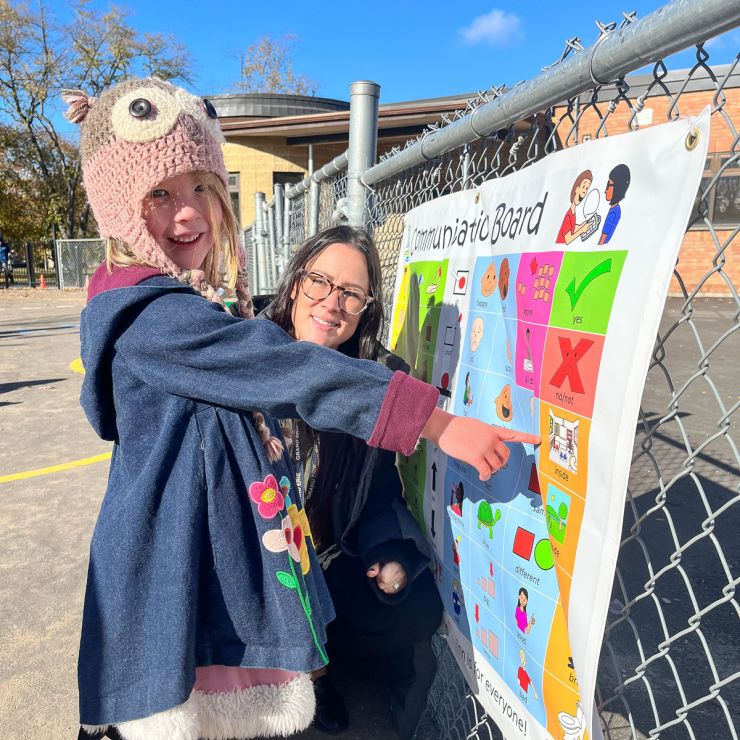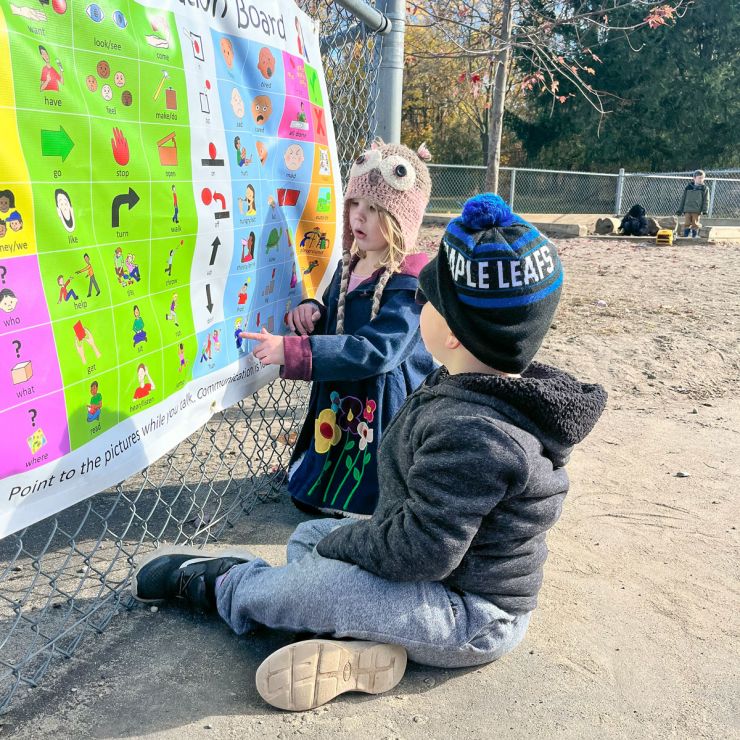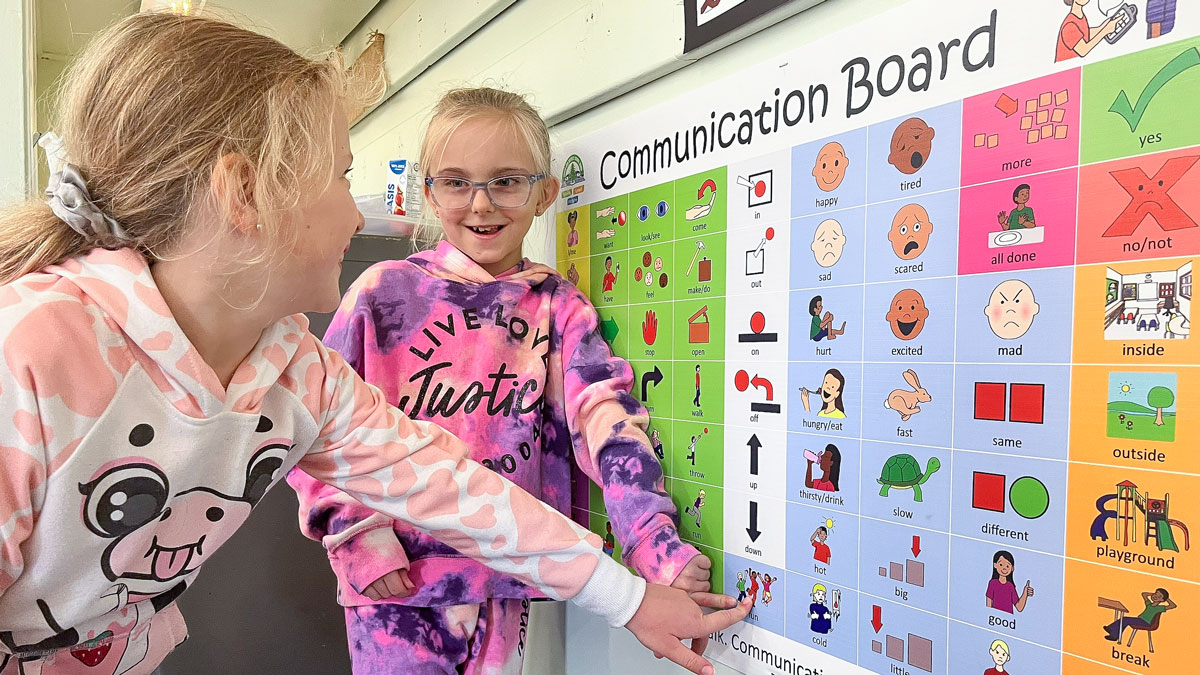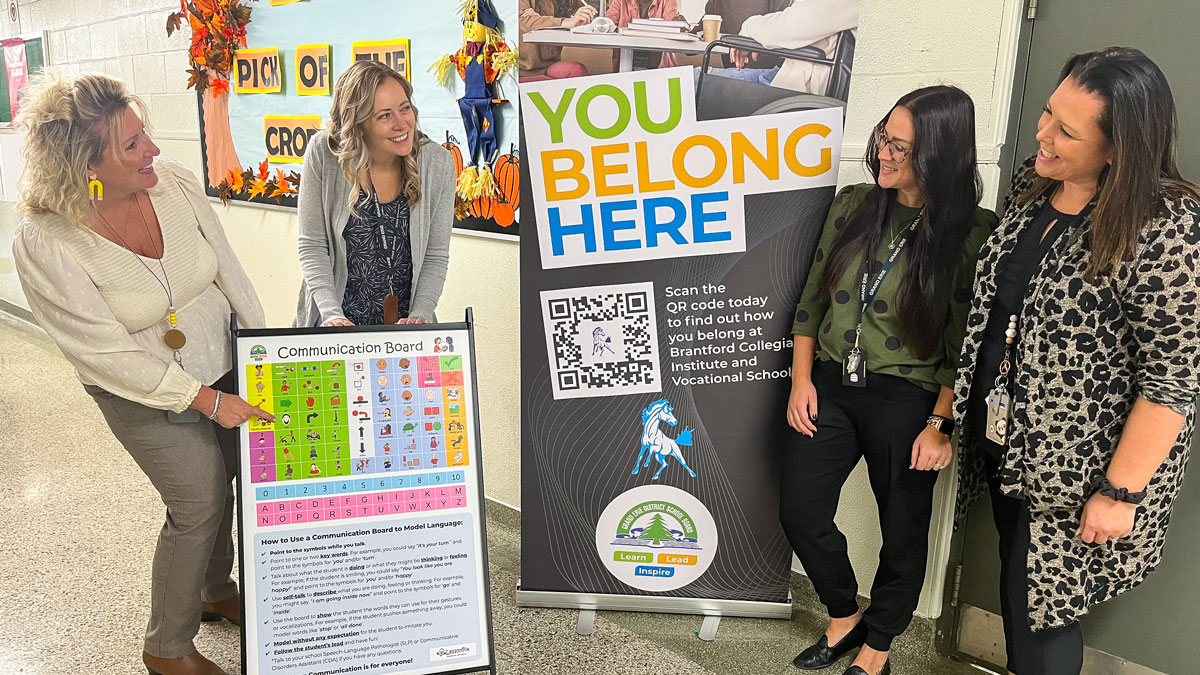Inclusion by Design: Communication Boards Help Learners be Understood
THURSDAY, NOV. 30, 2023
E
ddie the Elephant Has Something to Say is a story about a big creature with equally big ideas, but who sometimes has difficulty being understood by the animals around him… that is until he finds a device to help him express himself.
It’s a story Tonya Lambert, Communicative Disorders Assistant, and her colleagues within Grand Erie’s Specialized Services team, share with learners to help introduce augmentative and alternative communication (AAC) concepts, showing them the various ways students with speech difficulties might use similar tools to assist with communication.
Now, classrooms and school yards at elementary schools across Grand Erie have a new tool that helps meet these goals. Communication boards featuring dozens of easy-to-understand icons and symbols which learners can point to in order to indicate a need, or share a thought with a friend or educator, are on display and ready to use. They’re big and bold, and make it easy to communicate feelings and put together more complex ideas.
 |
| Above: Kindergartener Alberta, explores the playground communication board. |
“School communities as a whole have been very open to learning about and using this tool,” said Lambert, who has been part of the roll-out of the communication boards to schools, explaining their intention during staff meetings, lunch-and-learns and one-on-one discussions with classroom teachers. “It’s a highly adaptable and universal support, so they see the needs it’s meeting and how easily learners take to it.”
The boards were originally developed for use outdoors, but the Communication Services team quickly saw the potential beyond the playground. Now they’re on the walls at eye-level in primary classrooms, and larger sandwich-board style versions can be moved to various locations. There are even hand-held versions that stay with students and can go home with them to use with their families.
“Communication happens everywhere, so it’s important that these boards have the ability to go everywhere too,” said Melissa Dumoulin, Speech-Language Pathologist, who was part of the development team, narrowing down the vocabulary and user-friendly elements to include. “The ability to communicate is incredibly important and links to learning, social interaction, mental health and well-being – a lot of growth happens when you’re understood.”
Educators, family members and peers can show students how to use the communication boards by pointing to key words and pictures while speaking. The intended users of the communication boards are learners with communication difficulties, which can include students with autism, speech impairments or developmental disabilities. As with elements of universal design, however, what works for one tends to work for many, and educators at Lansdowne-Costain Public School have seen the wide-ranging applications of the tool.
In Tasha Clement’s Grade 3 classroom, the boards have been a way to bridge understanding and deepen friendships.
“Sometimes it’s hard for people to talk with words, so we can use pictures instead,” said Grade 3 student Eliza.
Clement’s class recently expanded its use of the boards when students welcomed a new classmate who is learning English.
 |
| Above: Kindergarten students point to images on communication boards to easily convey thoughts and feelings. |
“We talked about what it means to be a good friend, even when you don’t speak the same language,” said Clement, who added translations of the words on the board to open up opportunities for multi-language learners. “Not only is this making social groups bigger and more inclusive, it’s opening eyes to the idea that we can communicate in different ways, and there’s a deep level of understanding and respect there.”
In Jennifer Hysert’s Kindergarten classroom at Lansdowne-Costain, the universal design elements of the board have given way to similar possibilities for what it means to be inclusive, and the hands-on assistance from the Specialized Services team made the difference in implementing it successfully, shifting her own thinking.
“As educators, we always want to ensure we’re meeting students’ needs, and that starts with understanding those needs,” said Hysert, who is seeing learners thrive in the classroom and at home as they continue using the tool after school. “To be able to feel safe and understood and to be included is foundational, so tools like this make an incredible difference.”
For the Lansdowne-Costain community, form has truly followed function as they embrace the elements of universal design for learning and allow the users of the tool to determine where to take it.
“We put the strategies in place, we’ve shown how it can be used, and now students are showing us how far this can go,” said Lambert.
Grand Erie’s Multi-Year Strategic Plan prioritizes building a culture of belonging to support equitable, inclusive and responsive environments for each learner.


